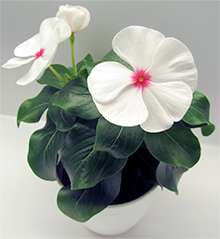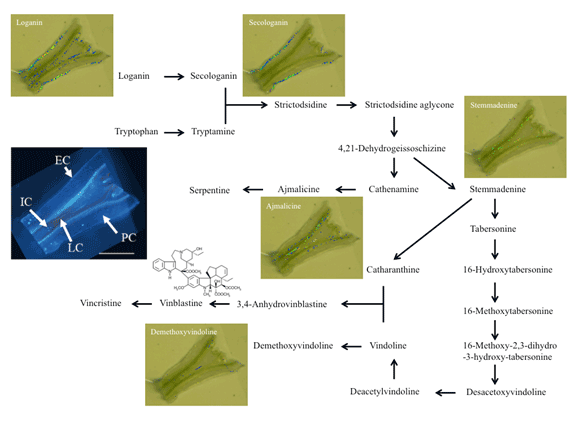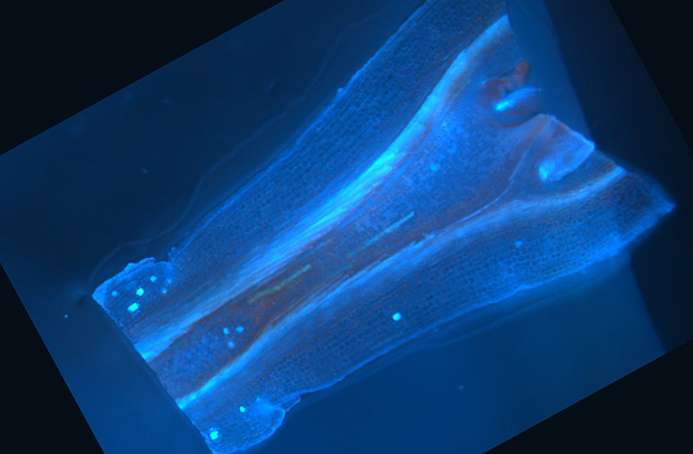Details revealed for how plant creates anticancer compounds

Catharanthus roseus (rosy periwinkle) is a plant that produces organic compounds used to treat cancer, arrhythmia, and other medical conditions. A Japanese research group has revealed the details of the metabolism process for these compounds on a cellular level. Their data suggests the existence of an unknown mechanism which regulates the creation, movement and distribution of compounds within plants. The findings will be published in the online version of the Proceedings of the National Academy of Sciences (PNAS) in the week of March 21, 2016.
Plants are essentially stationary, so in order to protect themselves from insects, wild animals and disease they create a self-defense system of chemical compounds known as secondary metabolites. Most of these compounds are stored in the vacuoles of plant cells, and activate if an animal eats the plant. Humans have a long history of using these metabolites as both medicines and stimulants: they include nicotine and caffeine.
The researchers examined Catharanthus roseus (rosy periwinkle), a plant well known for producing the antitumor compounds classified as terpenoid indole alkaloids (TIAs). During the process for metabolizing TIAs, various intermediary compounds are created and travel across different cells, finally arriving at the idioblast or laticifer cells where they are stored. Until now it was unclear how each compound moved between cells, and how their creation and storage was controlled within each cell.

The team analyzed the cellular distribution of each compound within the tissue using imaging mass spectrometry for the tissue and single-cell mass spectrometry for individual cells. This revealed, among other things, that the compounds previously assumed to have been metabolized and stored in the epidermal cells were in fact present in large numbers in a totally different location: idioblast cells.
These findings suggest the possibility of an unknown mechanism that regulates the creation, movement and regulation of organic compounds within plants. Additionally, clarifying the details of the metabolic process for valuable compounds in plants such as Catharanthus roseus could potentially help to develop new methods for synthesizing organic compounds.

More information: Cell-specific localization of alkaloids in Catharanthus roseus stem tissue measured with Imaging MS and Single-cell MS, www.pnas.org/cgi/doi/10.1073/pnas.1521959113
Journal information: Proceedings of the National Academy of Sciences
Provided by Kobe University



















